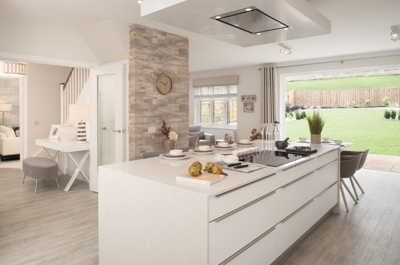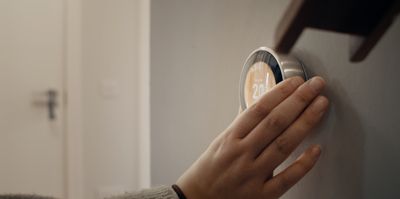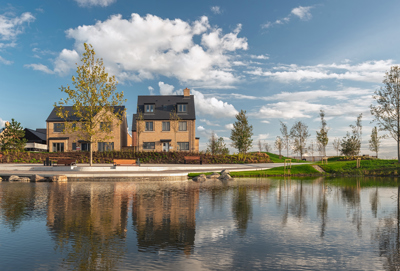1. Turn your boiler temperature down
Most people’s boiler temperature is set too high as a default. This doesn’t make your home warmer, but it can add massively to your bills and carbon emissions. Typically, when bathing or washing the dishes, cold water is added to ensure the water is the right temperature for our skin, but this seems counterproductive, so it would make more sense to lower the temperature of the water to begin with.
When it comes to washing dishes, the common concern people have with this is that they believe the water won’t be hot enough to kill bacteria, however, to do this the water would need to be 75°C, which is scalding hot – generally, 30°C to 40°C is hot enough with the addition of soap or washing up liquid.
If you have a combi boiler, it is recommended to adjust your flow temperature down from typical temperatures of 65°C -75°C to 50°C. The other setting on a combi boiler that can be lowered is the hot water which is also typically set too high at 65°C -70°C and should be lowered to 55°C. Doing just this could provide up to an eight per cent saving on your gas bill and is easy to change if needed.
Also, while looking at boiler settings, check your boiler pressure. Make sure your system is operating at the recommended pressure of between 1 and 2 bars. If it isn’t then you will need to get someone to look at it and finally if the option is there switching off the pre-heat function can save another 5-10% on your annual gas bill.
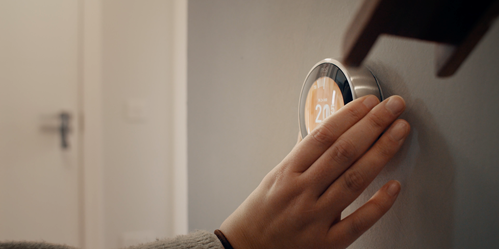
2. Grab a coat… for your hot water cylinder
If your home has a hot water cylinder, then fitting an insulating jacket could reduce heat loss by a massive 75%. These jackets, typically, only cost around £15 and are easy to apply yourself. Just make sure when looking at your options, the one you pick is at least 80mm thick to offer the maximum heat loss reduction.
3. Give your radiators some TLC
Although we are coming out of the colder months there may still be the need for radiators in the home until we hit summer. There are some maintenance jobs you can do to ensure that, when they are needed, your radiators are performing at their best.
Firstly, you need to bleed your radiators if there are cold spots, especially near the top of your radiators or your heating makes a tapping or knocking sound as it heats up, there could be air being trapped inside. If this is the case then your heating system won’t be working efficiently, so ensure that you bleed each radiator throughout the home.
Another good habit to get into to is giving your radiators a good clean, front and back. Although it is tempting to think “out of sight, out of mind” the dust build-up will act as a heat absorber and reduce their ability to distribute heat effectively and efficiently.
4. Cut shower time by ONE minute
The biggest water and hot water user in most homes is the shower. Reducing the amount of time you spend in the shower not only reduces your energy bill but could also reduce your water bill too if your house is on a meter.
Cutting just a minute off your shower time could save up to £207 a year in energy bills, and a further £105 a year in water bills – totaling to a potential saving of £312 a year for an average four-person household. Fitting a timer in your shower can help influence how long you stay in there.
What about a bath? It is more economic to have a shower, both in terms of heating water and the volume of water too, however, this is only applicable if showers are less than 10 minutes.
If you can’t bear to give up even a minute of shower time you could opt for a low-flow shower head instead. These gadgets could shave around two per cent off a typical family’s annual bill and in some places in the UK, you can get a low-flow shower head for free.
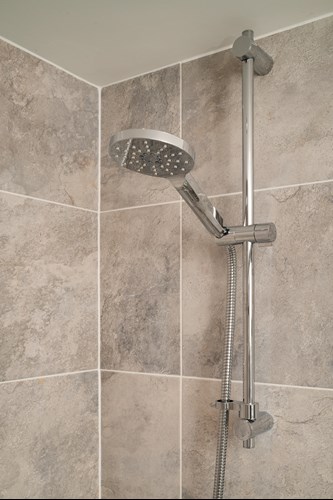
5. To fill or not to fill?
How you use your appliances has a big impact on the energy they use, and the way in which you fill them could help you to maximise energy savings.
Firstly, what to fill as much as possible before use? This category includes dishwashers and washing machines, with additional savings to be made for washing clothes at a lower temperature (up to £54 a year).
The second category is filling to near capacity, between two thirds and three quarters full. This applies to fridges and freezers as this is where they operate at their highest efficiency. If you need things to fill the space add water bottles or bags of water, or even newspaper or boxes will do the job. Less organic material means less radiation and less heat needing to be extracted to keep things cool.
It is also worth taking some time to clean the coils of our fridges and freezers as this can reduce their efficiency by 25% and, if possible, ensure there’s at least 10cm spacing between the appliance and the wall to allow adequate ventilation.
Finally, the appliance to fill as little as possible… the trusty kettle. The average kitchen kettle is around 3,000 watts and uses around 0.11kWh to heat 1 litre of water, which is equal to 26p for 4 cuppas. Try to get into the habit of filling just the number of mugs you need.
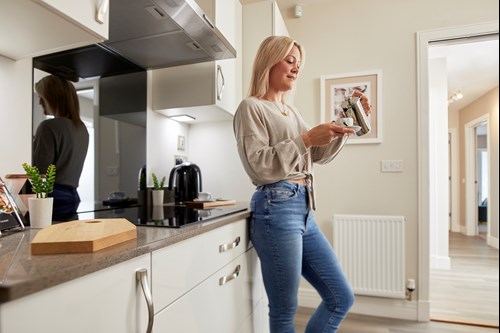
6. Unplug the unused
Convenience leads many of us to leave unused devices and plugs plugged in. Research by British Gas revealed that UK households could save an average of £147 on their electricity bills each year by switching off “vampire electronics”, those that continue to drain power when left on standby and even device chargers that are left plugged in.
When not in use, such as before bed, switch off devices at the mains rather than switching to standby, as even the standby light on a television uses energy.
Also, try not to over-charge your mobile phone and laptop. As soon as your device is charged, try and get into the habit of unplugging it and switching the socket off. Not only will this save energy, but it also prolongs your devices’ battery life.

